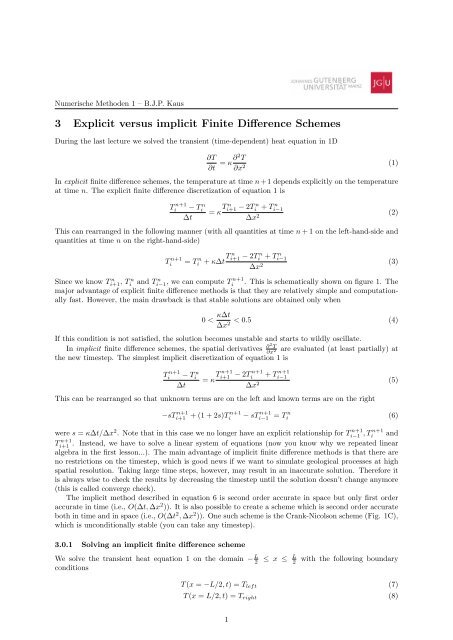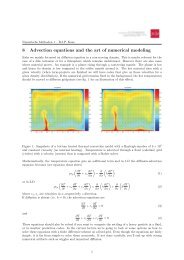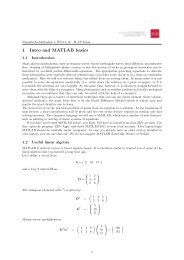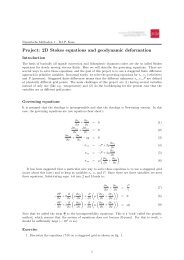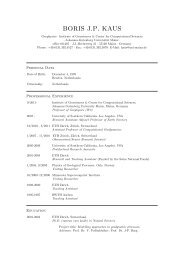Explicit vs. implicit finite differences.
Explicit vs. implicit finite differences.
Explicit vs. implicit finite differences.
You also want an ePaper? Increase the reach of your titles
YUMPU automatically turns print PDFs into web optimized ePapers that Google loves.
Numerische Methoden 1 – B.J.P. KausProgram the analytical solution and compare the analytical solution with the numerical solutionwith the same initial condition.3. A steady-state temperature profile is obtained if the time derivative ∂T∂tin the temperature equation(eq. 1) is zero. There are two ways to do this. 1). Wait until the temperature doesn’t changeanymore (it is wise to employ a large timestep dt for this; you can now do this, since the <strong>implicit</strong>code is stable, independent of timestep. 2. Make a <strong>finite</strong> difference discretization of ∂2 T∂x= 02and solve it. Employ both methods to compute steady-state temperatures for T left = 100 andT right = 1000.4. Derive and program the Crank-Nicolson method (fig. 1C).5. Bonus question 1: write a code for the thermal equation with variable thermal conductivity k:∂Tρc p ∂t= ( ) ∂∂x k∂T∂x Assume that the grid spacing ∆x is constant.6. Bonus question 2: Write a code for the case with variable grid spacing ∆x and variable thermalconductivity k.4


